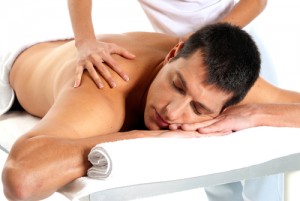 Two decades of rock climbing and a career in writing have left me with two distinct things. One, an ability to step back from the world and make a careful assessment. A zen approach, if you will, to risk and making my way in this world.
Two decades of rock climbing and a career in writing have left me with two distinct things. One, an ability to step back from the world and make a careful assessment. A zen approach, if you will, to risk and making my way in this world.
The second is a seriously messed up pair of forearms. Recently I have been taking these poor old dogs to an excellent massage therapist here in Mexico City. Now, when you hear the word “massage,” don’t get the wrong idea. It’s not some Swedish bikini model rubbing me down with oil. Mark the massage therapist is strong, knowledgeable, and totally without mercy. A trip to his dungeon – sorry, I mean office – goes a little like this:
Mmmm. Nice. Think I’ll just take a little nap since I’m
Aaaaghh! HOLY SWEATY TESTICLES OF ODIN!!! That frigging hurt!!
Uuhhh, that was rough. Over now. Just relax and try to…
GHAAHHH! MOTHER OF A RHINO’S SPHINCTER!!!!
Oh, I really hope he doesn’t do that again. This is nice though. Maybe I can still….
GLAAARRRP! SWEET SHARDS OF GLASS IN MY SPLEEN! MAKE IT STOP!

It’s unpleasant to go from near-comatose to eye-bulging Hulk-rage in less than a second. Mark says that on his table he has seen screaming, cursing, drooling, farting, secretions of all sorts, uncontrollable laughing or crying, and just about everything else you can imagine.
The cause of most of this is something scientists call “myofascial trigger points.” Mark calls them knots. I prefer MTrP and I’ll tell you why. It sounds more painful. It sounds like something you should pity me for (most of my activities in this life revolve around attracting and deserving some level of pity). A knot is something annoying or useful that you untie. An MTrP, on the other hand, sounds like an ingredient in explosives or something that you fire from a shoulder-held bazooka (similarly, Mark shall now be referred to as a “spontaneous nociception delivery specialist”).
So what is an MTrP? You’d think that because massage has been an integral part of exercise since Achilles and Hector got their post-mindless-slaughter-rubdowns, that we would know a lot about them. You’d be wrong (as you often are when you are purely hypothetical).

In fact, we don’t really know that much about MTrPs. I mean, we know they are caused by some kind of spasm surrounded by proteins. We know, as this recent paper proves, that when you poke them they hurt. We know that some actively hurt while others seem dormant. We know that they can lead to myofascial pain syndrome – or ouchy muscles. And we think that ischaemic compression (also called “rubbing”) helps.
We don’t really know how they are formed, why they end up in one spot as opposed to another, if they are truly detrimental (though they are linked to all kinds of problems, many people never even notice they’re there) and most frustratingly, how to get rid of them. A number of (oddly often Turkish) studies and people have suggested that ultrasound works – even breaking MTrPs up (which explains why fetuses are so limber). But then, a number of more thorough studies show ultrasound doesn’t do squat.
One recent breakthrough study showed that dorsiflexion range of motion (or moving the nearby joint around) can help right after exercise. Another definitively said that MTrPs are absolutely without a doubt perhaps maybe related to tennis elbow. But maybe not. It may be related to fibromyalgia (another sort of disparate, hard-to-quantify type of pain) or it may not. Same with lower back pain, and on and on and on.

As a result, a lot of ideas have flooded in to fill the void – some interesting and most smelling distinctly of hooey. Mark says that closely related muscle groups can influence knots, which seems reasonable. Many trigger point theories involve disparate pain being tied to faraway muscle knots, which seems to be a little thin if it’s too disparate. I mean there’s a good chance that rubbing your feet will not release the knot in your back. But get a foot rub anyway, you deserve it.
Treatment is likewise not well agreed in the literature. Certainly massage seems to be widely used and recommended. Many try injecting the damn things with everything from steroids to botox. But because it’s tied to pain, the mighty placebo effect comes into play, as placebos are especially potent with pain-related issues. One common practice is to inject saline into the MTrPs, which is literally the definition of a placebo treatment.
So I guess for now I’ll just keep going back to Mark and raging expletives while he buries his elbow in my back and arms. But seriously, science, common colds and MTrPs. Get on it.
Photo Credits: Shutterstock and the wonderful world of Warner Brothers.
Expect more on MTrPs from me in the future as I try and untangle the mystery of these knots.
Oh, I’ve spent some quality time at the physical therapist’s office dealing with these lately. Good times.
Oh, thank you. This made my morning. (And also made me slightly regretful that my short-lived career as an LMT didn’t last longer. Who knew I could listen to people screaming “Holy sweet barracuda’s taint!”)?
Cameron – I’m sure if you just mentioned that skill at a writers meeting, you’d find plenty of opportunity.
Erik, in your ongoing investigation, please look into the almost psychic ability of MTs to zero in on these MTrPs. These people are like bloody knot-seeking agents of insta-pain. There’s an entire back in front of them and within seconds they’ve found the exact location of the point guaranteed to generate the highest-decibel scream. It’s uncanny.
There actually was a paper on that that I ran across. How MT are able to find knots so quickly. No idea where.